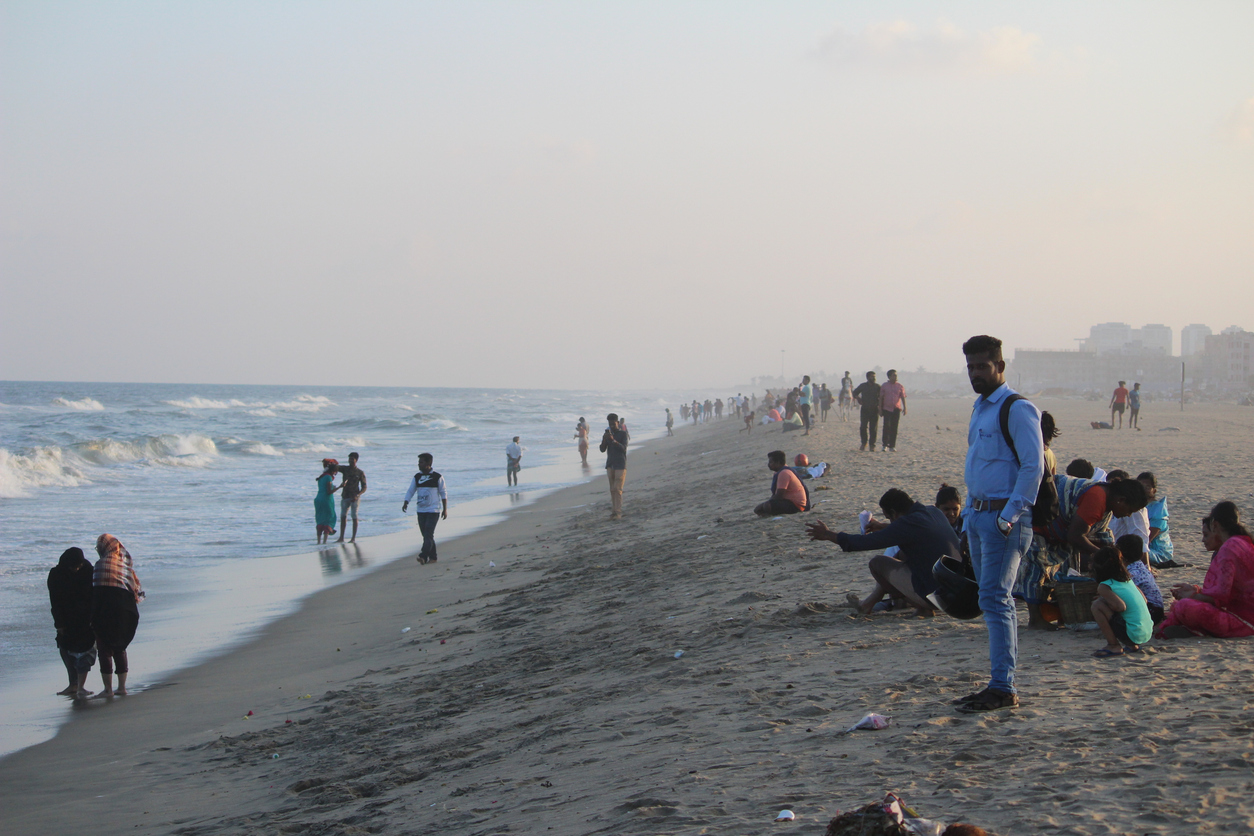The Tribunal has also stressed the need for public awareness to prevent residents from coming into contact with the contaminated foam.
Published Nov 04, 2025 | 3:47 PM ⚊ Updated Nov 04, 2025 | 3:47 PM

Representational image. Credit: iStock
Synopsis: NGT’s Southern Bench suo motu probes toxic foam at Chennai’s Pattinapakkam beach post-Oct 22 rains. TNPCB blames sewage, high phosphates. Tribunal orders agencies to report by Jan 19, demands public warnings as kids play unaware in polluted froth, highlighting recurring coastal pollution crisis.
The Southern Bench of the National Green Tribunal (NGT) has taken suo motu cognisance of the thick layer of foam that covered Pattinapakkam beach in Chennai on 22 October, raising concerns over its potential health and ecological impact.
The Bench, comprising Justice Pushpa Sathyanarayana and expert member Prashant Gargava, initiated proceedings after media reports and photographs showed residents, including children, playing in the foam without awareness of the risks involved.
During the hearing, the Tribunal observed that such occurrences, even if sporadic, warrant serious attention due to their environmental implications.
Justice Sathyanarayana noted that while these incidents do not happen after every rainfall, the recurring appearance of foam indicates a persistent pollution issue that requires investigation and remedial action.
Reports submitted by the Tamil Nadu Pollution Control Board (TNPCB) revealed that the foam was primarily caused by sewage discharge and high phosphate levels in wastewater entering the sea.
The TNPCB has identified that phosphate concentration remains significantly high, contributing to repeated instances of foam formation along the Chennai coastline.
To address the issue comprehensively, the NGT has directed multiple agencies, including the TNPCB, State Government, Water Resources Department, Chennai Metropolitan Water Supply and Sewerage Board, and Greater Chennai Corporation, to investigate and file detailed reports before 19 January.
The Tribunal has also stressed the need for public awareness to prevent residents from coming into contact with the contaminated foam.
(Edited by Amit Vasudev)
